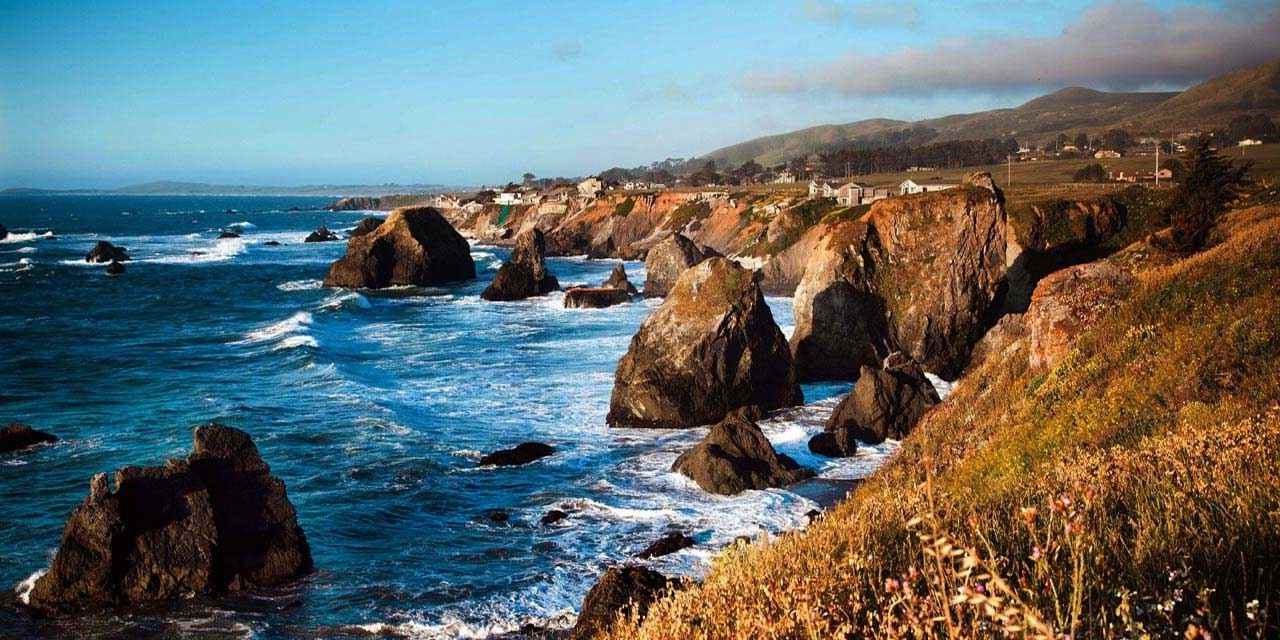
Ever wondered why California's coastal region is such a big deal? Well, you're about to find out! From its breathtaking beaches to its unique ecosystems, this stretch of the Golden State is nothing short of spectacular. But what makes it truly stand out? Is it the surf-friendly waves, the diverse marine life, or the history etched into its cliffs and coves? California's coastal region is a marvel of nature and human achievement, offering more than just picturesque sunsets and sandy toes. In this blog post, we'll dive into 20 fascinating facts that highlight why this area is a must-see for travelers and a source of pride for locals. Ready to have your mind blown by the wonders of California's coast? Let's get started!
Key Takeaways:
- California's coastal region spans over 840 miles, boasting diverse landscapes and unique ecosystems. It plays a vital role in the state's economy and conservation efforts, making it a must-visit destination for tourists.
- From iconic landmarks like the Golden Gate Bridge to popular activities like surfing and whale watching, California's coastal region offers endless opportunities for adventure and cultural exploration. It's a treasure trove of natural beauty and rich history.
Understanding California's Coastal Region
California's coastal region stretches over 840 miles, offering a diverse landscape that includes sandy beaches, rugged cliffs, and vibrant cities. This area is not only a major tourist attraction but also plays a significant role in the state's economy and environmental conservation efforts.
- California's coastline is one of the longest in the United States, extending from the soft, sandy beaches of San Diego in the south to the rugged, rocky shores of the Mendocino Coast in the north.
Climate Variability Along the Coast
The climate along California's coast varies significantly from north to south. While the northern coast experiences cooler temperatures and higher rainfall, the southern coast enjoys warmer weather and sunnier days.
-
Fog is a common phenomenon in the coastal areas, particularly in San Francisco, where it adds a mystical charm to the city but can also significantly reduce visibility.
-
Microclimates are prevalent along the coastal region, meaning weather conditions can change dramatically over short distances.
Unique Ecosystems and Wildlife
California's coastal region is home to unique ecosystems, including kelp forests, tide pools, and wetlands, which support a wide variety of wildlife.
-
The California Coastal National Monument protects over 20,000 small islands, rocks, and reefs along the coastline, providing critical habitats for marine life.
-
Endangered species, such as the southern sea otter and the California condor, find sanctuary along the coast, highlighting the area's importance for conservation efforts.
Economic Impact of the Coastal Region
The coastal region significantly contributes to California's economy through tourism, fishing, and shipping industries.
-
Tourism is a major economic driver, with destinations like Los Angeles, San Francisco, and San Diego attracting millions of visitors each year.
-
Commercial fishing remains a vital industry, with ports along the coast providing fresh seafood to local and international markets.
Threats to the Coastal Environment
Despite its beauty and biodiversity, California's coastal region faces several environmental threats, including pollution, climate change, and habitat destruction.
-
Plastic pollution poses a significant threat to marine life, with countless pieces of plastic debris washing up on beaches or floating in the ocean.
-
Sea level rise, a result of climate change, threatens to erode beaches and inundate coastal communities and ecosystems.
Coastal Conservation Efforts
Efforts to protect and preserve California's coastal region are ongoing, involving government agencies, non-profit organizations, and local communities.
-
The California Coastal Commission plays a crucial role in regulating land use and development along the coast to minimize environmental impact.
-
Beach cleanups and conservation programs are popular volunteer activities, helping to remove trash from beaches and protect marine habitats.
Iconic Coastal Landmarks
California's coast is dotted with iconic landmarks that have become symbols of the state's natural beauty and cultural heritage.
-
The Golden Gate Bridge, spanning the entrance to San Francisco Bay, is one of the most photographed bridges in the world.
-
Big Sur, a rugged stretch of coastline between Carmel and San Simeon, offers breathtaking views and has inspired countless artists and writers.
Coastal Recreation and Activities
The coastal region offers a wide range of recreational activities, from surfing and swimming to hiking and wildlife watching.
-
Surfing is a popular pastime, with spots like Malibu and Santa Cruz known worldwide for their excellent waves.
-
Whale watching tours are a must-do activity, providing opportunities to see majestic creatures such as blue whales and humpback whales up close.
The Cultural Impact of the Coast
California's coastal region has had a profound impact on American culture, influencing everything from music and movies to fashion and food.
-
The Beach Boys, an iconic American rock band, captured the spirit of California's beach culture in their music, making surf rock a global phenomenon.
-
Hollywood, located just a short distance from the coast, has shaped global perceptions of California through films and television shows set in and around Los Angeles.
Future of California's Coastal Region
As California continues to face environmental challenges, the future of its coastal region depends on sustainable management and conservation efforts.
-
Renewable energy projects, such as offshore wind farms, are being explored as ways to reduce the state's carbon footprint without harming marine ecosystems.
-
Coastal restoration projects aim to rebuild natural habitats, such as wetlands and dunes, to protect against erosion and support biodiversity.
-
Community engagement in conservation efforts is crucial for ensuring the long-term health and beauty of California's coastal region, encouraging residents and visitors alike to take an active role in protecting this invaluable natural resource.
A Final Wave from California's Coast
California's coastal region, with its stunning landscapes, diverse ecosystems, and rich history, offers endless discoveries. From the majestic redwoods in the north to the sun-kissed beaches in the south, this area is a treasure trove of natural beauty and cultural heritage. We've journeyed through the significance of conservation efforts, the impact of climate change, and the vibrant communities that call this coastline home. Remember, every visit and every action taken towards preserving this unique environment contributes to its legacy. Whether you're a local or a traveler, the call of the California coast is an invitation to explore, respect, and protect. So, lace up your hiking boots or grab your surfboard; adventure and awe await along the golden shores.
Frequently Asked Questions
Was this page helpful?
Our commitment to delivering trustworthy and engaging content is at the heart of what we do. Each fact on our site is contributed by real users like you, bringing a wealth of diverse insights and information. To ensure the highest standards of accuracy and reliability, our dedicated editors meticulously review each submission. This process guarantees that the facts we share are not only fascinating but also credible. Trust in our commitment to quality and authenticity as you explore and learn with us.


